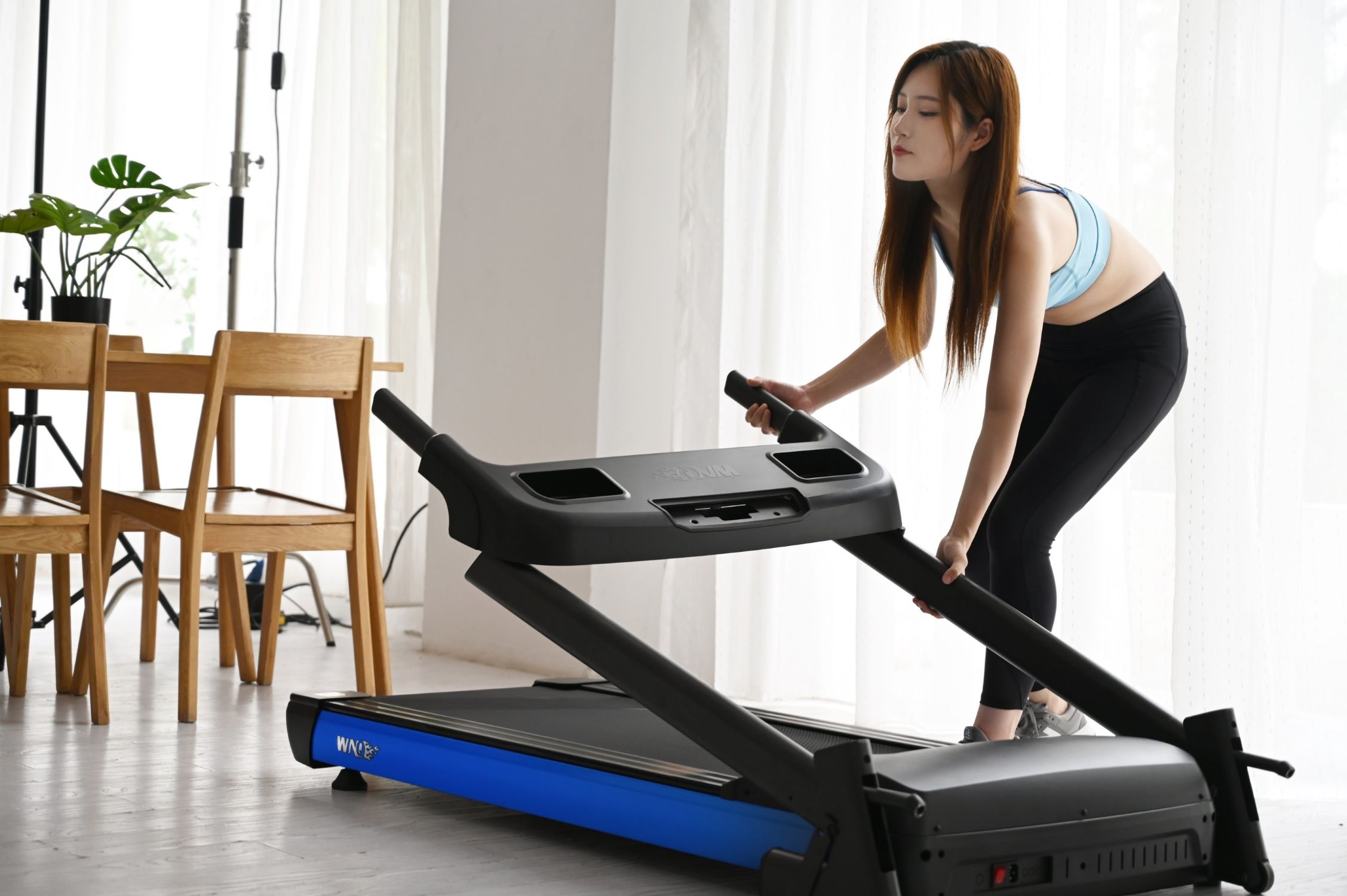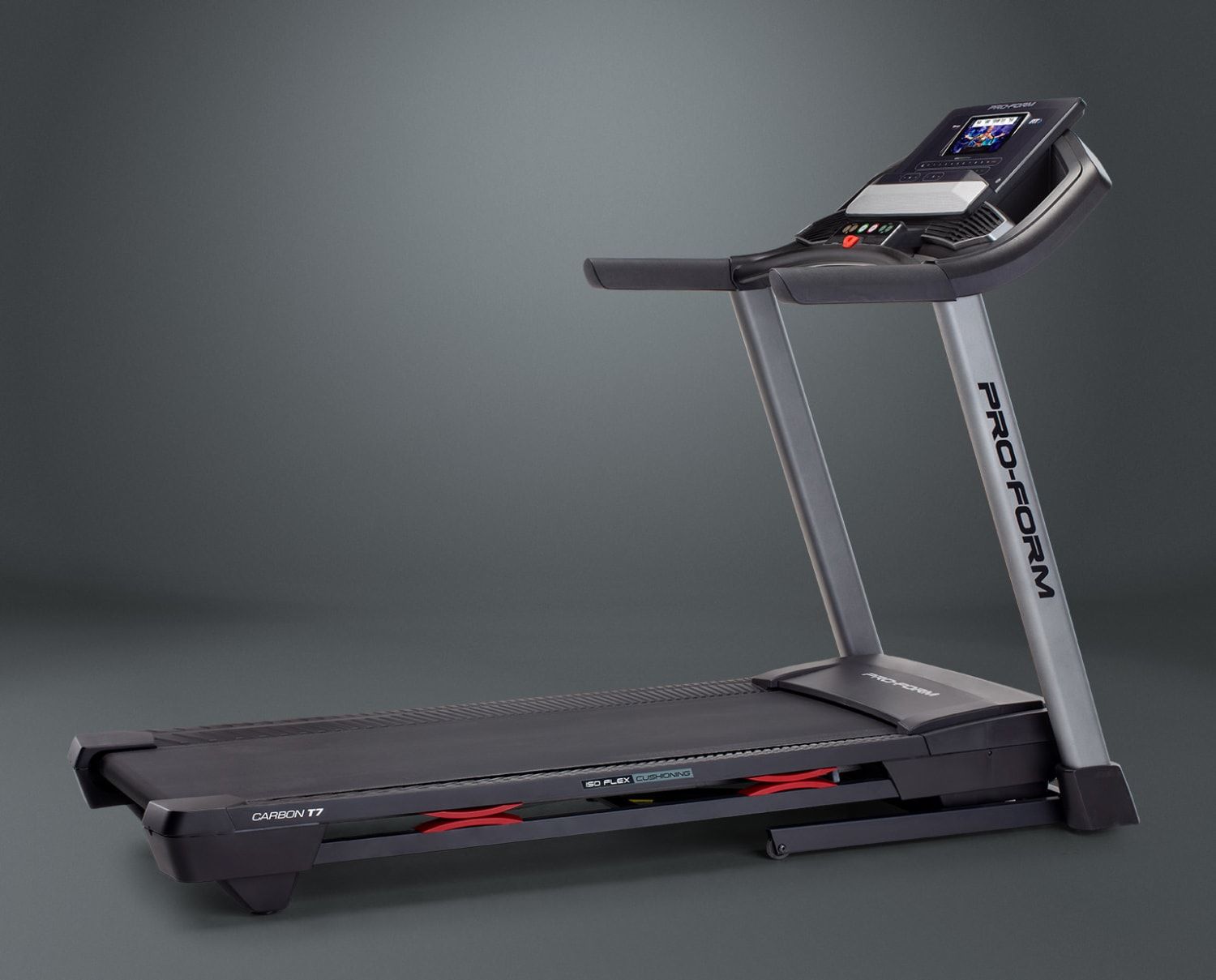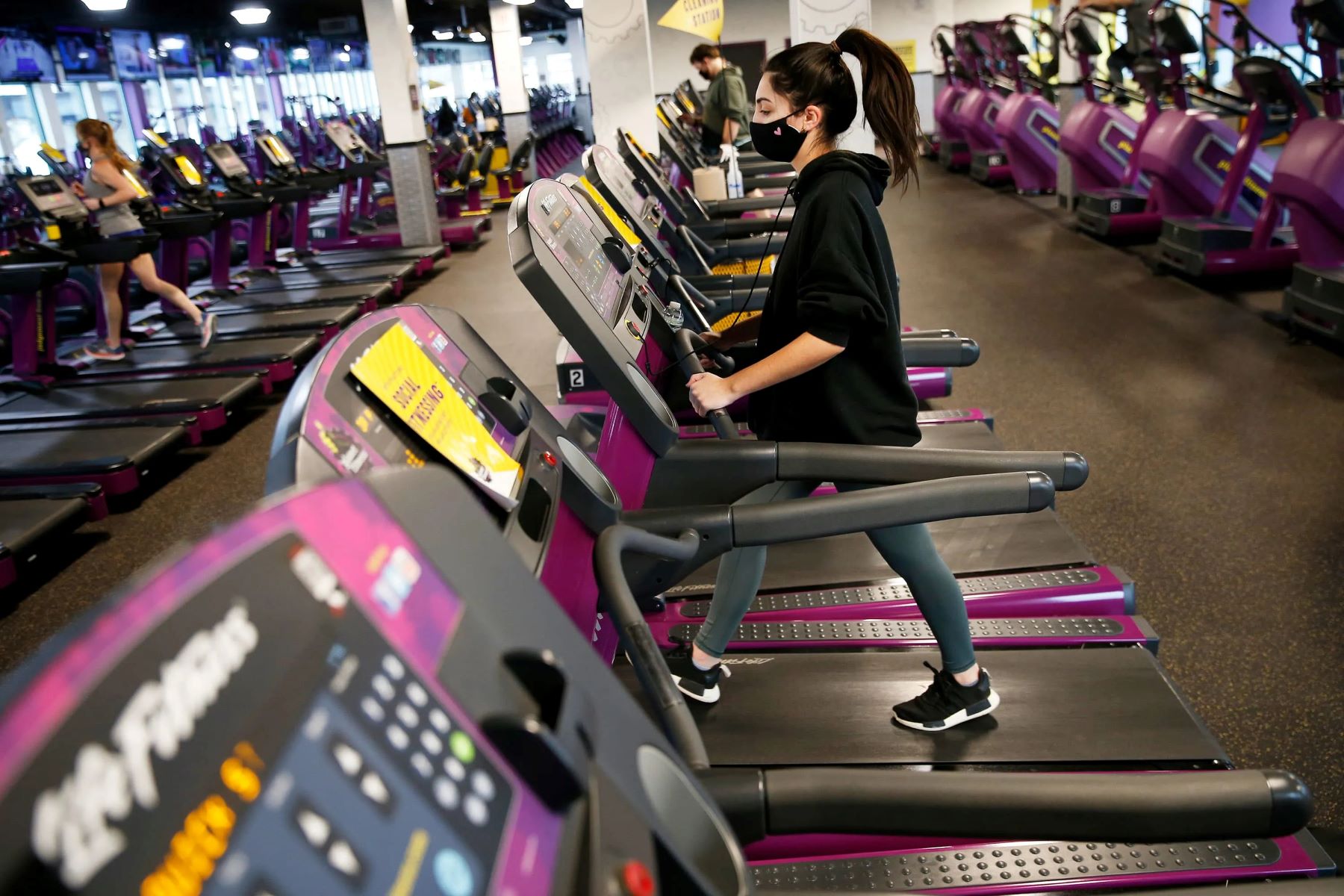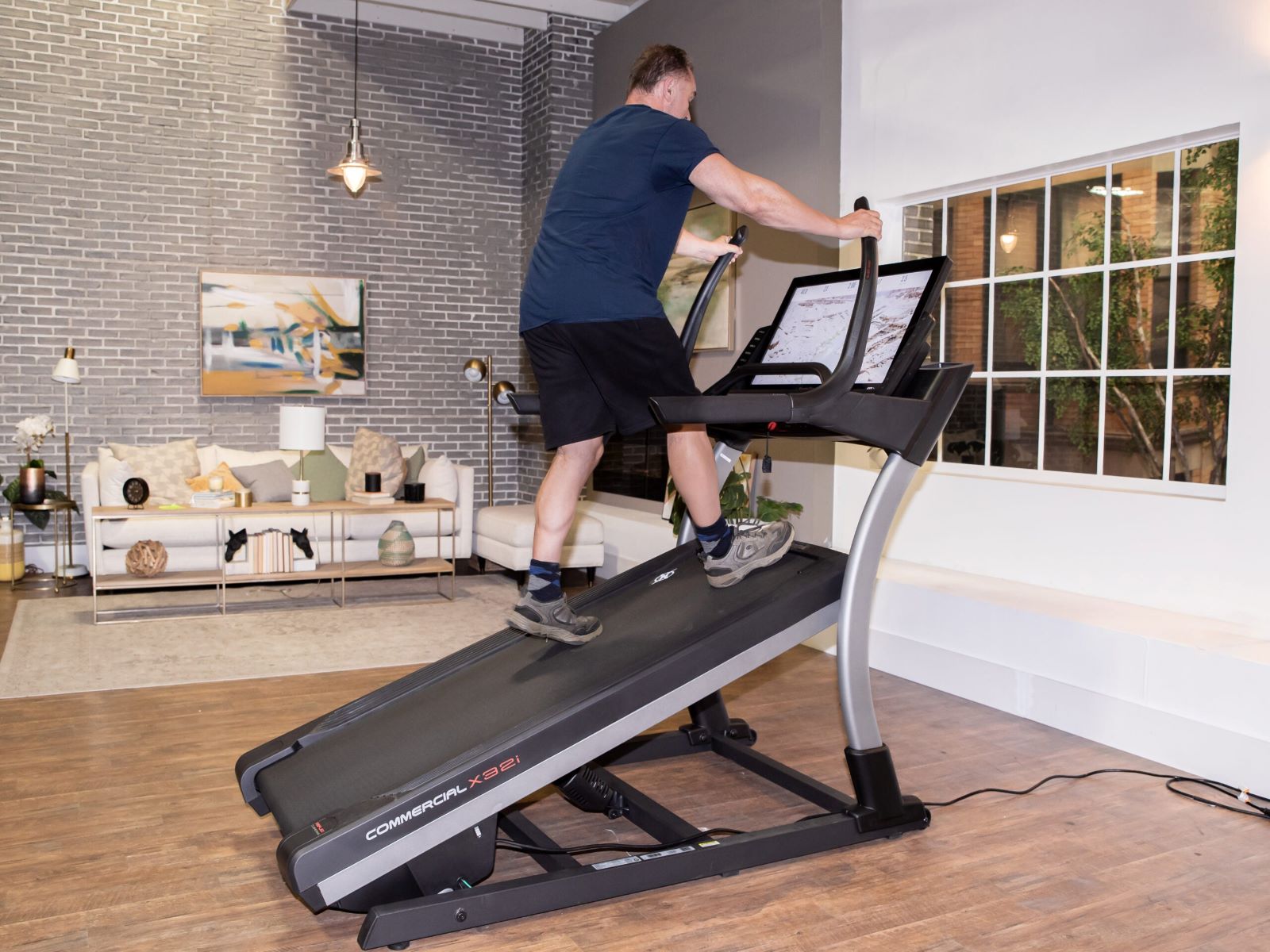

Featured
How To Start Jogging On A Treadmill
Modified: August 21, 2023
Learn how to start jogging on a treadmill with our featured guide. Get tips and tricks to get you running towards your fitness goals.
Introduction
Welcome to the world of treadmill jogging! Whether you’re a beginner looking to improve your fitness or a seasoned runner seeking a convenient indoor alternative, jogging on a treadmill offers a host of benefits. This article will guide you on how to start jogging on a treadmill, equipping you with essential knowledge and tips to make your journey successful.
Jogging is a fantastic way to improve cardiovascular endurance, strengthen muscles, and burn calories. It provides a low-impact workout that reduces strain on joints, making it suitable for people of all fitness levels and ages. With a treadmill, you have the flexibility to control your running conditions, including speed, incline, and time. Plus, you can avoid external factors like inclement weather or uneven terrains.
If you’re new to treadmill jogging, fear not! This guide will help you navigate the world of treadmills and provide you with all the information you need to get started. From safety precautions to proper running form, we’ll cover it all.
Before we delve into the specifics, it’s important to note that while treadmill jogging is a convenient option, it does not replace the benefits of outdoor running entirely. If possible, try to incorporate both indoor and outdoor workouts into your routine to enjoy the best of both worlds.
Now, let’s lace up our sneakers, hop on the treadmill, and discover the joys of jogging indoors!
Benefits of Jogging on a Treadmill
Jogging on a treadmill offers numerous advantages that make it a popular choice for fitness enthusiasts. Let’s explore the benefits of incorporating treadmill jogging into your workout routine:
- Convenience: One of the major benefits of treadmill jogging is the convenience it offers. You can exercise at any time, regardless of the weather conditions. Whether it’s raining, snowing, or scorching hot outside, the treadmill provides a climate-controlled environment for your workout.
- Controlled Environment: With a treadmill, you have complete control over your running conditions. You can adjust the speed, incline, and duration of your workout as per your fitness level and goals. This allows you to gradually increase the intensity of your training and track your progress over time.
- Reduced Impact: Treadmill jogging is a low-impact workout that puts less stress on your joints compared to running on concrete or uneven terrains. The cushioned surface of the treadmill helps absorb shock, making it an excellent option for individuals with joint issues or those recovering from injuries.
- Safety: Jogging on a treadmill eliminates the risk of outdoor hazards such as traffic, uneven surfaces, or stray animals, ensuring a safe workout session. This is particularly beneficial for those who prefer exercising alone or during late hours when outdoor visibility might be limited.
- Consistency: Treadmill jogging allows you to maintain a consistent pace throughout your workout. This can be helpful in achieving specific training goals, such as improving endurance or speed. Additionally, the treadmill’s built-in features, such as heart rate monitors and calorie counters, provide real-time feedback, enabling you to track your performance accurately.
Incorporating treadmill jogging into your fitness routine can bring about significant improvements in your overall health and well-being. It provides an effective cardiovascular workout, helps in weight management, and boosts your mood by releasing endorphins. Moreover, treadmill jogging allows you to multitask by watching your favorite TV show, listening to music, or even working while getting your daily dose of exercise.
Now that we’ve explored the benefits of treadmill jogging, it’s time to dive into the next step: choosing the right treadmill for your needs.
Choosing the Right Treadmill
When it comes to selecting the perfect treadmill for your jogging needs, there are several factors to consider. Here are some key points to help you make an informed decision:
- Usage: Determine how often and how intensely you plan to use the treadmill. If you’re a beginner or will be using it for light jogging or brisk walking, a basic model with fewer features may suffice. However, if you’re a serious runner or plan to use the treadmill regularly for intense workouts, investing in a higher-quality, durable treadmill is recommended.
- Size: Consider the available space in your home or gym. Measure the area where you plan to place the treadmill to ensure it fits comfortably. It’s also crucial to account for additional space needed for your movement and safety during the workout.
- Motor Power: The motor is the heart of a treadmill, so it’s important to choose one with sufficient power. Look for a motor with a minimum of 2.5 continuous horsepower (CHP) for jogging purposes. A more powerful motor will provide a smoother running experience and handle higher speeds and inclines more effectively.
- Running Surface: The running surface should be wide and long enough to accommodate your stride comfortably. Aim for a treadmill with at least a 20-inch width and a 55-inch length for jogging. If you have longer legs or desire extra space for a broader range of motion, consider a larger running surface.
- Features and Programs: Treadmills come with various features and workout programs to enhance your jogging experience. Look for features like adjustable incline, pre-set workout programs, heart rate monitors, and connectivity options for entertainment or fitness tracking. Assess your preferences and goals to determine which features are essential for you.
Budget: Set a budget for your treadmill purchase. Treadmills come in a wide price range, so having a budget in mind will help narrow down your options. Remember, it’s important to strike a balance between quality and affordability to ensure you get a durable treadmill that meets your needs.
Warranty: Check the warranty offered by the treadmill manufacturer. A longer warranty period indicates the manufacturer’s confidence in their product. Look for warranties covering the motor, parts, and labor, and ensure there is adequate customer support available.
Once you have considered these factors, research different treadmill models and read reviews to gather more information. Visit a local fitness equipment store to try out various treadmills in person, assess their comfort, stability, and noise levels. If purchasing online, thoroughly read product descriptions and customer reviews to make an informed decision.
Now that you’re equipped with the knowledge to choose the right treadmill, let’s move on to the next crucial aspect: safety precautions and guidelines for treadmill jogging.
Safety Precautions and Guidelines
While treadmill jogging is a safe and convenient option, it’s important to prioritize safety to prevent accidents and injuries. Follow these safety precautions and guidelines to ensure a smooth and injury-free workout:
- Consult with a healthcare professional: If you have any underlying medical conditions or concerns, it’s advisable to consult with a healthcare professional before starting any exercise program. They can provide personalized advice and guidance based on your individual needs and fitness level.
- Warm-up and cool-down: Before stepping onto the treadmill, always begin with a proper warm-up routine. Perform dynamic stretches and gentle movements to gradually increase your heart rate and prepare your muscles. After your workout, dedicate a few minutes to cool down, allowing your heart rate and breathing to return to normal. This can help reduce post-workout muscle soreness and improve flexibility.
- Proper footwear: Wear appropriate athletic shoes with good arch support and cushioning to absorb shock during treadmill jogging. This will help reduce the risk of foot and ankle injuries. Avoid running barefoot or wearing shoes with inadequate support.
- Start at a comfortable pace: Begin your treadmill jog at a slow and manageable pace, especially if you’re a beginner or returning from a break. Gradually increase your speed as your body gets accustomed to the exercise. Listen to your body and don’t push yourself too hard, as this may lead to strains or other injuries.
- Stay hydrated: Maintain proper hydration by drinking water before, during, and after your treadmill workout. It’s essential to replenish fluids lost through sweat to avoid dehydration and maintain optimal performance.
- Proper posture and technique: Maintain proper body alignment while jogging on the treadmill. Stand tall, keep your head up, and relax your shoulders. Avoid leaning too far forward or backward, as this can strain your back and reduce running efficiency. Land lightly on your feet and take natural strides, similar to outdoor running.
- Use safety features: Familiarize yourself with the safety features of your treadmill. Most treadmills come equipped with an emergency stop button or safety key. Attach the safety key to your clothing so that if you lose balance or experience any issues, the treadmill will immediately stop.
- Focus and avoid distractions: Pay attention to your surroundings and stay focused while jogging on the treadmill. Avoid distractions like watching TV, using your phone, or wearing headphones at a high volume. Stay aware of your form and any changes in speed or incline to prevent accidents.
- Listen to your body: If you experience pain, dizziness, or shortness of breath during your workout, stop immediately and seek medical attention if necessary. It’s important to listen to your body’s signals and take breaks whenever needed.
- Clean and maintain your treadmill: Regularly clean the surface of the treadmill to remove any sweat or dirt buildup, as this can affect its performance. Follow the manufacturer’s maintenance guidelines to keep your treadmill in optimal working condition.
By following these safety precautions and guidelines, you can minimize the risk of injury and enjoy a safe and effective workout on the treadmill. Now that you’re familiar with the safety measures, let’s move on to the next step: warm-up and cool-down exercises for treadmill jogging.
Warm-up and Cool-down Exercises
Before diving into your treadmill jogging session, it’s crucial to properly warm up and cool down your body to prevent injuries and optimize performance. Incorporate the following warm-up and cool-down exercises into your routine:
- Warm-up:
- Start with a five-minute brisk walk on the treadmill to gradually increase your heart rate and warm up your muscles.
- Perform dynamic stretching exercises, such as leg swings, arm circles, walking lunges, and high knees. These movements increase blood flow to the muscles, improve flexibility, and prepare your body for the upcoming workout.
- Add some light cardio exercises like jumping jacks or jogging in place to further elevate your heart rate and warm up your entire body.
- Cool-down:
- After completing your treadmill jog, gradually decrease the speed of the treadmill and transition into a five-minute brisk walk to gradually bring down your heart rate.
- Perform static stretching exercises targeting major muscle groups, such as quadriceps, hamstrings, calves, and hip flexors. Hold each stretch for 20-30 seconds to improve flexibility and help prevent muscle tightness.
- Take deep breaths and focus on relaxing your body to promote recovery and reduce post-workout muscle soreness.
Remember, warming up prepares your body for exercise by increasing blood flow and warming up your muscles, while cooling down helps gradually return your body to a resting state and aids in muscle recovery. Skipping these important steps can increase the risk of muscle strains and post-workout discomfort.
Additionally, listening to your body during warm-up and cool-down exercises is crucial. If you experience any unusual pain or discomfort, modify the exercises or consult with a healthcare professional.
Now that we’ve covered warm-up and cool-down exercises, let’s move on to setting the correct speed and incline on your treadmill for an effective jogging workout.
Setting the Correct Speed and Incline
Setting the correct speed and incline on your treadmill is crucial for a successful and effective jogging session. Here are some guidelines to help you determine the appropriate settings:
- Speed:
- Start with a comfortable jogging speed that allows you to maintain a steady pace without straining. For beginners, a target speed of 4-6 miles per hour (mph) is a good starting point.
- As you progress and build endurance, gradually increase the speed to challenge yourself. Aim for a pace that elevates your heart rate and makes you break a sweat, but still allows you to carry on a conversation without gasping for breath.
- Remember, everyone’s fitness level is different, so listen to your body and adjust the speed as needed. It’s better to start slower and gradually increase than to overexert yourself or risk injury.
- Incline:
- If you want to simulate outdoor running, consider incorporating incline into your treadmill workout. Start with a flat or zero incline if you’re a beginner or focusing on building endurance.
- Gradually increase the incline to add intensity to your workout. Aim for an incline of 1-3% to mimic outdoor running conditions, which typically involve slight variations in elevation.
- If you’re training for hilly or challenging terrains, you can increase the incline further. However, avoid setting the incline too high as it may strain your muscles and joints.
Experiment with different speed and incline combinations to find what works best for you. The goal is to challenge yourself while maintaining good form and comfort during the jog. Remember to listen to your body and make adjustments accordingly.
Most modern treadmills offer pre-set workout programs that automatically adjust the speed and incline throughout your session. These programs can be a useful tool to vary the intensity and challenge yourself during the workout. Explore the available options and try different programs to keep your treadmill jogs engaging and effective.
By setting the correct speed and incline, you can customize your treadmill jog to suit your fitness level and goals. Now that you’re familiar with speed and incline settings, let’s move on to maintaining proper running form on a treadmill.
Proper Running Form on a Treadmill
Maintaining proper running form on a treadmill is essential for maximizing your efficiency, reducing the risk of injury, and optimizing your treadmill jogging experience. Follow these tips to ensure you maintain correct form:
- Posture:
- Stand tall with your head up, looking forward. Avoid looking down at your feet or hunching your shoulders.
- Keep your back straight and engage your core muscles to stabilize your upper body.
- Relax your arms and let them swing naturally at your sides. Maintain a 90-degree bend at the elbows.
- Footstrike:
- Land softly on the middle of your foot, rolling through to your toes. Avoid excessive heel striking, as it can cause unnecessary stress on your joints.
- Maintain a quick and light cadence, aiming for around 160-180 steps per minute. This helps reduce impact and increases your running efficiency.
- Stride Length:
- Take natural and comfortable strides, neither too long nor too short. Aim for a stride length that allows you to maintain a smooth and consistent pace.
- Avoid overstriding, as it can lead to higher impact forces and potential injuries. Focus on increasing stride turnover rather than lengthening your strides.
- Arm Swing:
- Allow your arms to swing naturally back and forth, coordinated with your leg movements.
- Maintain a relaxed and bent arm position, keeping your elbows at a 90-degree angle.
- Avoid crossing your arms in front of your body or excessively swinging them side to side, as it can throw off your balance and waste energy.
- Breathing:
- Breathe deeply and rhythmically, focusing on inhaling through your nose and exhaling through your mouth.
- Find a breathing pattern that feels comfortable for you and matches your running intensity.
Remember to listen to your body and make adjustments as needed. If you experience any pain or discomfort while jogging on the treadmill, take a break and assess your form. Consulting a running coach or seeking guidance from a fitness professional can be beneficial in correcting your form and preventing injuries.
By maintaining proper running form on a treadmill, you’ll not only improve your running efficiency but also reduce the risk of muscle imbalances, joint pain, and other common running-related issues. Now that you have a good understanding of proper running form, let’s move on to creating a jogging routine on the treadmill.
Creating a Jogging Routine
Having a structured jogging routine on the treadmill will help you stay consistent, track your progress, and gradually improve your fitness level. Here’s how you can create an effective jogging routine:
- Set your goals: Determine what you want to achieve through your treadmill jogging. Whether it’s improving cardiovascular fitness, losing weight, or training for a specific event, having clear goals will guide your routine.
- Select your workout frequency: Decide how many days per week you will dedicate to treadmill jogging. Aim for a minimum of three to four days a week to see noticeable improvements in your fitness level.
- Determine your workout duration: Decide how long each treadmill jogging session will be. If you’re a beginner, start with 20 to 30 minutes and gradually increase the duration as you build endurance. Aim for at least 150 minutes of moderate-intensity aerobic activity per week, as recommended by health guidelines.
- Choose your workout intensity: Determine the intensity level of your treadmill jogging sessions. You can start with a moderate pace that allows you to maintain a conversation comfortably. As you progress, incorporate intervals of higher intensity, where you push yourself to a faster pace or higher incline for short bursts of time.
- Warm up and cool down: Begin each jogging session with a proper warm-up routine and conclude with a cool-down period. Remember to include dynamic stretches during the warm-up and static stretches during the cool-down to prepare your muscles and aid in recovery.
- Vary your workouts: To keep your treadmill jogging routine interesting and prevent boredom, incorporate variety into your workouts. Mix up the speed, incline, and duration of your runs. Consider trying different workout programs available on your treadmill, such as hill training or interval workouts, to challenge yourself and keep things exciting.
- Track your progress: Keep a record of your workouts, including the distance covered, time taken, and any notable achievements or improvements. This will help you track your progress over time and motivate you to push further. Many treadmills have built-in trackers or you can use fitness tracking apps or wearable devices to monitor your progress.
- Listen to your body: Pay attention to how your body feels during and after each treadmill jogging session. If you experience pain, fatigue, or any discomfort, adjust your intensity or take rest days as needed. It’s important to give your body time to recover and prevent overtraining.
- Gradually increase difficulty: Once you’ve established a routine, gradually challenge yourself by increasing the intensity, duration, or frequency of your workouts. Progressing slowly and steadily will help avoid overexertion and minimize the risk of injuries.
A well-structured jogging routine will not only help you achieve your desired fitness goals but also ensure you enjoy your treadmill workouts and stay motivated. Now that you know how to create a jogging routine, let’s move on to the next step: progressing and increasing difficulty in your treadmill jogging.
Progressing and Increasing Difficulty
To continually challenge yourself and make progress in your treadmill jogging journey, it’s important to increase the difficulty of your workouts over time. Here are some strategies to help you progress and push your limits:
- Gradually increase duration: As your endurance improves, add a few minutes to your jogging sessions. Aim to extend the duration by 5-10% every week or two. This gradual increase will allow your body to adapt and avoid sudden overexertion.
- Intensify interval training: Incorporate intervals of higher intensity into your workouts. Alternate between periods of faster running or higher incline and recovery periods of slower jogging or walking. As you become more comfortable with interval training, increase the duration or intensity of the high-intensity intervals.
- Increase speed: Once you have a solid base and feel comfortable with your current pace, gradually increase your jogging speed. Add a small increment to your speed, such as 0.1-0.2 mph, and work on maintaining that pace for longer durations. Over time, you’ll be able to jog at a faster speed without compromising proper form.
- Raise incline: Challenge your muscles and cardiovascular system by raising the incline level on the treadmill. Gradually increase the incline by 1-2% to simulate uphill running. This will engage different muscle groups and provide a more demanding workout.
- Try hill repeats: Incorporate hill repeats into your routine to improve strength and endurance. Increase the incline to a challenging level and jog up the hill for a set duration or distance. Then, recover by jogging on a flat surface or a lower incline. Repeat this sequence several times to enhance your fitness level.
- Incorporate speed intervals: Include speed intervals where you sprint at a faster pace for a short duration, followed by recovery intervals at a slower pace. This not only improves your speed and cardiovascular fitness but also adds some variety to your treadmill routine.
- Explore incline variations: Experiment with different inclines during your jogging sessions. Alternate between flat terrain, inclines, and declines to mimic outdoor running conditions and challenge your muscles in different ways.
- Try longer distances: If you’re comfortable with shorter distances, gradually increase to longer jogging sessions. Set a distance goal and add a little extra distance each week until you reach your desired distance. This is particularly helpful if you’re training for a specific event or looking to build endurance.
Remember to listen to your body and progress at a pace that feels comfortable for you. Don’t rush the process and ensure you maintain proper form and technique during your workouts. Consistency and gradual progression are key to improving your performance and achieving your fitness goals.
Now that you know how to progress and increase the difficulty of your treadmill jogging, let’s explore strategies to help you stay motivated and consistent in your fitness journey.
Staying Motivated and Consistent
Staying motivated and consistent with your treadmill jogging routine is essential for long-term success and achieving your fitness goals. Here are some strategies to help you stay motivated and maintain consistency:
- Set realistic and achievable goals: Establish goals that are specific, measurable, attainable, relevant, and time-bound (SMART). Having clear goals gives you something to strive for and helps you stay focused and motivated.
- Track your progress: Keep a record of your workouts, including distance, time, pace, and any personal achievements. Seeing your progress on paper or through a fitness tracking app can be highly motivating and encouraging, especially when you notice improvements over time.
- Vary your workouts: Incorporate variety into your treadmill jogging routine to keep things interesting. Try different workout programs, intervals, inclines, or even explore virtual running apps that simulate real-life running routes. Experimenting with new workouts and challenges can prevent boredom and boost motivation.
- Find a workout buddy or join a group: Exercising with a friend or joining a running group can provide accountability and support. Having someone to share the journey with can make treadmill jogging more enjoyable and help you stay motivated on days when you might not feel like working out.
- Reward yourself: Set up a reward system for achieving milestones or reaching certain goals. Treat yourself to something you enjoy, like a massage, a new workout outfit, or a small indulgence. Rewards can serve as a powerful motivator and provide a sense of accomplishment.
- Create a motivating workout environment: Set up a dedicated workout space that is clean, well-organized, and inspiring. Add elements that motivate you, such as motivational quotes, uplifting music, or a TV screen for entertainment during your workouts.
- Join challenges or races: Sign up for virtual races or fitness challenges to add excitement and purpose to your training. Having a specific event on the calendar can provide extra motivation and help you stay on track with your treadmill jogging routine.
- Stay accountable: Share your goals and progress with friends and family members. It can be a great source of motivation knowing that others are supporting and cheering you on. Consider posting your workouts on social media or joining online fitness communities to stay connected with like-minded individuals.
- Listen to motivational podcasts or music: Find podcasts or playlists that inspire and energize you during your treadmill workouts. Positive and uplifting content can keep you motivated, distract you from fatigue, and make your jogging sessions more enjoyable.
- Track non-scale victories: Celebrate non-scale victories like improved energy levels, increased stamina, better sleep quality, stress reduction, or enhanced mood. Focusing on these positive changes can help you stay motivated even if the number on the scale doesn’t change as quickly as you may like.
Remember, motivation can fluctuate over time. There may be days when you lack the drive to step on the treadmill, and that’s normal. During such times, remind yourself of your goals, reflect on the progress you’ve made, and take it one day at a time. Consistency is key, so even on days when motivation is low, try to at least do a shorter or less intense workout to keep the habit alive.
Now that you’re armed with strategies to stay motivated and consistent, it’s time to put them into practice and unleash the full potential of your treadmill jogging routine.
Conclusion
Congratulations! You have now gained valuable knowledge on how to start jogging on a treadmill. By incorporating treadmill jogging into your fitness routine, you can enjoy a convenient, challenging, and safe workout at any time of the day, regardless of the weather conditions.
We explored the various benefits of treadmill jogging, including convenience, controlled environments, reduced impact on joints, and improved safety. Choosing the right treadmill that suits your needs and preferences is crucial for a comfortable and effective workout. We discussed factors to consider, such as usage, size, motor power, running surface, features, budget, and warranty.
To ensure a safe and injury-free experience, we provided you with essential safety precautions and guidelines. Proper warm-up and cool-down exercises were highlighted as crucial steps to prepare your body and promote recovery. Maintaining proper running form, including posture, footstrike, stride length, arm swing, and breathing, will contribute to an efficient and enjoyable treadmill jogging session.
Creating a jogging routine is key to staying consistent and achieving your fitness goals. We explored strategies to set goals, determine frequency and duration, choose workout intensity, and track progress. Additionally, we discussed progression techniques to increase difficulty gradually and keep challenging yourself.
Staying motivated and consistent with your treadmill jogging routine is vital for long-term success. We presented various strategies, including setting realistic goals, tracking progress, varying workouts, finding support, and creating an inspiring environment. Remember, motivation may fluctuate, but staying accountable, rewarding yourself, and celebrating non-scale victories will help you stay on track.
Throughout this journey, it’s important to listen to your body, respect its limits, and make modifications as needed. Always prioritize safety, consult with a healthcare professional if necessary, and seek guidance from fitness experts to ensure proper technique and form.
Now that you have a solid understanding of how to start jogging on a treadmill, it’s time to lace up your shoes, step on that treadmill, and embark on an incredible journey of fitness and self-improvement. Enjoy the thrill of treadmill jogging, challenge yourself, and embrace the changes that come with consistent effort. Get ready to elevate your fitness level, boost your overall health, and experience the countless rewards that await you on the path of treadmill jogging.
So, what are you waiting for? Let the rhythm of your footsteps on the treadmill propel you towards a healthier, fitter, and more vibrant version of yourself!









